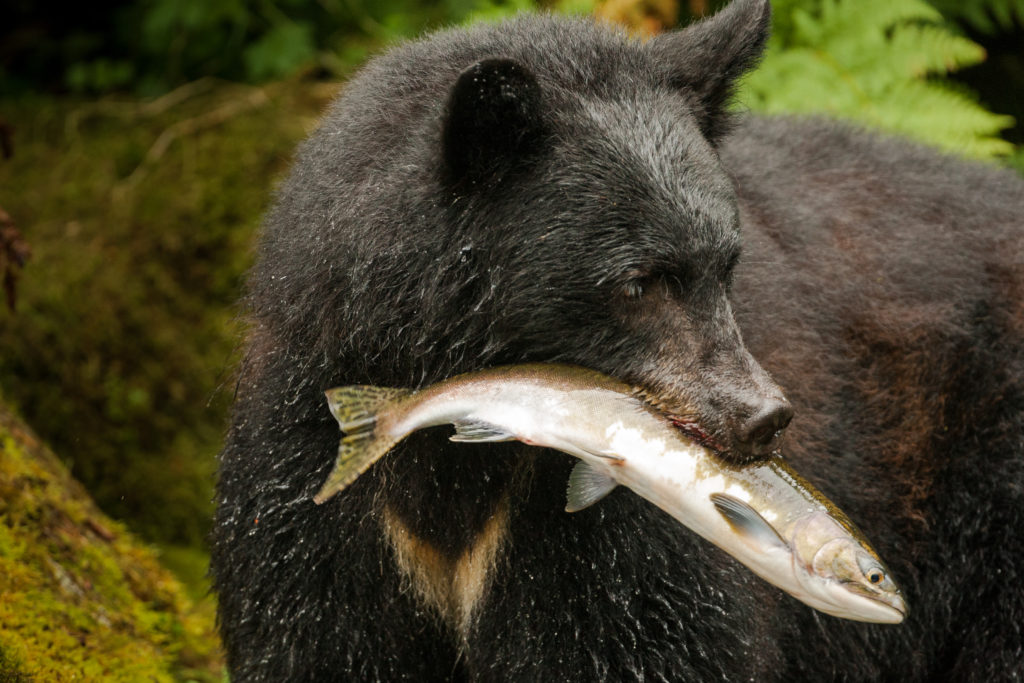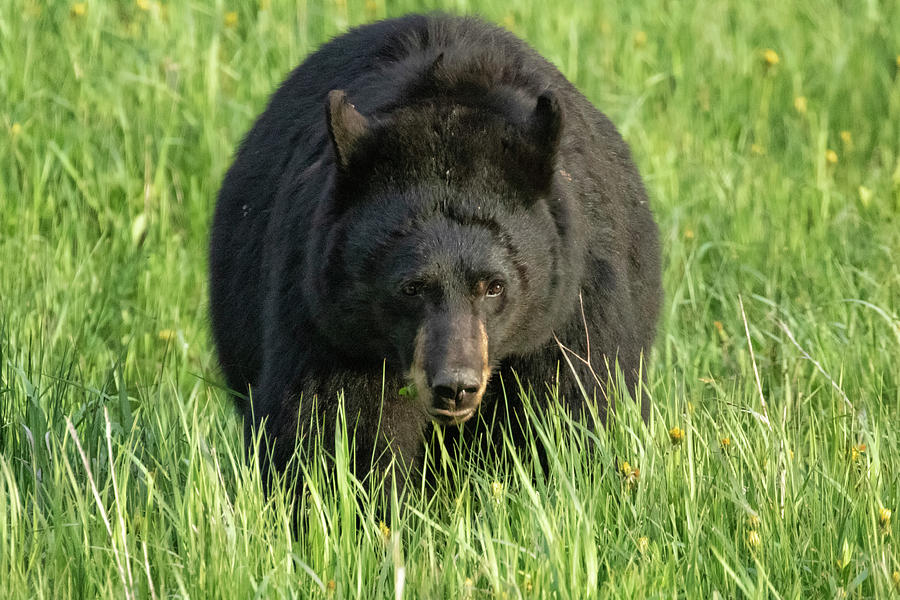Black bears captivate & inspire many people across Canada.
Their size is one impressive factor. Adult males average between 90 & 110 kilograms, though can be up to 220 kilograms. Adult females are smaller, weighing on average 60 kilograms, but up to 135 kilograms.
Black bears historically ranged over most of the forested regions of North America, including all Canadian provinces, Alaska, all states in the conterminous United States, & significant portions of northern Mexico.
Black bears can live for 20 years or more but few of them do. Many die at the hands of humans through hunting, vehicle collisions, & the killing of “nuisance” bears. Natural causes of death include rival bears, other wildlife (e.g., wolves) &, among cubs, abandonment or starvation.
FAMILY TIES
Like humans, bears invest considerable time & energy in their young. Female black bears usually have their first litter at about 6 years of age, & they breed only every 2 or 3 years. Female bears have a litter of one to 4 cubs born in late December or early January in their den. Cubs usually stay with their mother for a year & a half. Female cubs may then continue to have access to the mother’s feeding grounds. The young males disperse, however, & wander over long distances for the next few years until reaching sexual maturity, at which point they compete with other males for territory.
THE ULTIMATE OMNIVORE
Black bears search constantly for food to feed their young & build fat for their long winter hibernation. Approximately 75% of the black bear diet consists of twigs, leaves, shoots, buds, berries, roots, grasses & nuts. Insects, fish, carrion & the springborn young of moose & deer make up the remainder. However, bears are opportunistic feeders & will take advantage of any food source. This can bring them into contact with people, crops, campsites, & garbage dumps.
CLOSE ENCOUNTERS
The black bear has an acute sense of smell & can detect carrion or other food at great distances. Bears will often smell (or hear) humans & retreat before being spotted. Encounters can occur, however, when bears are caught off-guard by people approaching from downwind, or when bears are attracted by human odours such as poorly stored garbage.
BEAR BEHAVIOUR
If you meet a bear at close range, you should be aware of some basic bear behaviour. In most cases the bear will leave, but every situation is unique.
A bear is checking you out when it:
Stands on its hind legs to get a better look
Waves its head from side to side, sniffing the air to catch your scent
Makes low-pitched, non-aggressive grunting sounds
A bear is getting upset when it:
Clacks its teeth
Makes an explosive blowing sound
A bear is telling you to move away when it:
Blows loudly
Makes short lunges, & slaps the ground or an object
Makes “bluff” charges that stop short of you
WHAT TO DO IF YOU MEET A BEAR
In the backcountry:
Leave the area.
Back away slowly: stay calm & don’t run.
Make yourself look large; if you’re in a group, band together & raise your arms.
Try to scare the bear by waving, yelling, banging pots, blowing air horns or making other loud noises.
If a bear follows you, put your pack down to distract it while you retreat.
At a campground, cottage or rural home:
Take shelter in a building or vehicle.
Try to scare the animal with loud noise (campground bears can be more difficult to scare than backcountry bears, however).
Ensure that the bear has a clear escape route: don’t scare it into a neighbouring campsite.
On the remote chance of black bear attack:
Do not play dead. Playing dead may deter grizzly bears, but will not work with black bears.
Do not climb up a tree. Black bears are adept climbers & you will only trap yourself. Fight back. You can improve your chances of escape by launching a strong counter-attack.
Fend off the bear any way you can.
Bear spray is not a substitute for other precautions. Always do what you can to avoid a bear encounter.
Nuisance bears are usually created by humans. Careless humans teach bears that people are easy sources of food. Poorly managed open-pit dumps, for example, are notorious training grounds for problem bears. And at home, garbage bins, dirty barbeque grills, & pet food left outdoors are common bear attractants.
Changing human behaviour is the most effective way to reduce conflict relating to human-bear encounters. Be Bear Wise!
FUTURE OUTLOOK & HOW YOU CAN HELP
According to the Ministry of Natural Resources & Forestry, it is difficult to estimate black bear population size & trends. In 2016, renowned bear researcher Martyn Obbard said that Ontario’s bear population was stable at 85,000 to 105,000 individuals.
You can help by respecting bears & following the tips above to avoid bad bear encounters. If you spot a bear & are concerned, call the Bear Wise hotline at 1-866-514-2327.
ABOUT OUR NATURE NETWORK PARTNER: ONTARIO NATURE
Ontario Nature protects wild species & wild spaces through conservation, education & public engagement. A charitable organization, Ontario Nature represents more than 30,000 members & supporters, & 150 member groups across Ontario.
Cute Critter Pics:









No comments:
Post a Comment